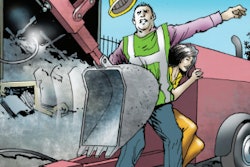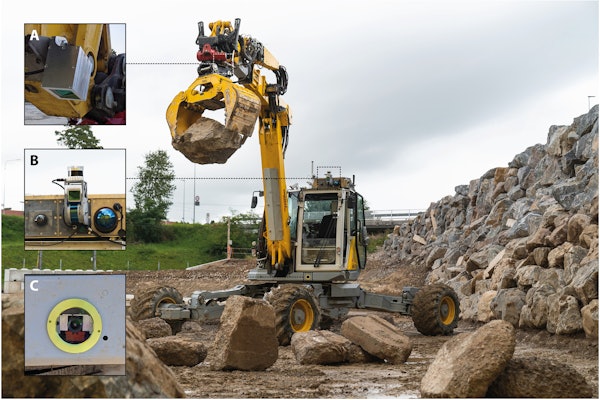
Safety Watch is an Equipment World feature that highlights a prior closed OSHA case and how the incident could have been prevented, to help improve jobsite safety. This story originally ran in August 2019.
The first day on any construction job is tough, but it shouldn’t have to be this tough.
The victim on this day was a 43-year-old construction laborer working for a masonry contractor. The job was to demolish and remove a concrete wheelchair ramp leading up to the side of a restaurant.
The victim had been standing on the ground helping to remove small pieces of debris as a compact excavator operator scooped up larger chunks.
When the bucket of the compact excavator got tangled up in the air lines of a compressor, the victim and a bystander, a woman who was a friend of the operator, stepped into the swing zone of the boom and bucket to see what the problem was. Hydraulic pressure on the boom, however, yanked the air hose free from its coupling at the compressor, and the boom and bucket jerked to the right. The operator overcompensated by pushing the controls to the left, which unfortunately caused the bucket to slam the victim and the woman against the side of the air compressor.
The victim suffered compression injuries but remained conscious. The woman suffered a laceration on her head but was not seriously harmed. After the excavator operator backed the bucket off, the coworker helped the victim to his truck and called 911.
Emergency medical responders transported both to the hospital, but while in transit, the victim became unresponsive and unstable. Emergency surgery was attempted, but the doctors could not stop the internal bleeding. He died the following morning about 10 hours after the incident.
According to state investigators, the general contractor did not have records showing evidence of a safety program or safety training.
How this accident could have been prevented:
- Provide workers with safety training to help them recognize unsafe conditions and work practices.
- Ensure that equipment operators have been trained in the safe operation of the equipment they are assigned to operate at the site.
- Conduct daily jobsite hazard reviews before work starts in the morning. An analysis of this jobsite would have shown that the excavator and the compressor and its hoses should have been positioned out of each other’s way.
- Take extra time to brief newcomers on the hazards of the jobsite. Experienced earthmoving crews know not to step into the swing radius of an excavator until the bucket is on the ground and the engine at idle. The victim and his coworker in this case obviously did not.









